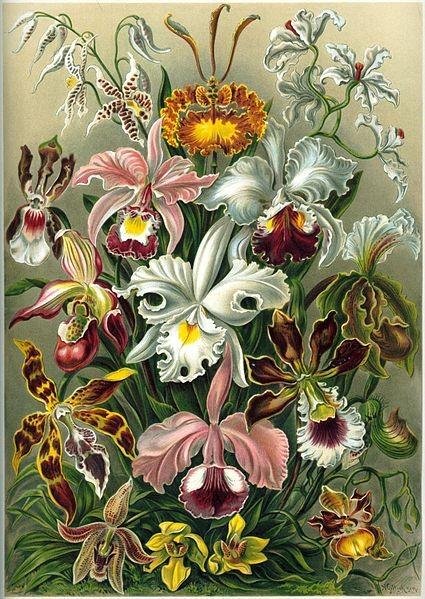Orchidaceae

Members of this tribe tend to have succulent or "fleshy" organs: thick with high water content. Thus he can live under conditions of low water availability. Water is obtained from rain, droplets, dew, or water vapor in the air. However, orchids are not found in the desert area because the roots are not intensive. Orchids like sunlight but not directly so that he is commonly found in nature as a forest floor plant or under shade. As an ornamental plant, orchids hold in space.
The fiber roots, not deep. The types of epiphytes are to develop succulent roots and attach to the tree trunks where they grow, but not harm the host tree. There are also growing geophytes, with other terms terrestria means growing on the ground with roots in the soil. There is also a saprophyte, growing on the media of dried leaves and decayed wood that has rotted into humus. At the root surface is often found root fungus (mikoriza) are symbiotic with orchids.
The orchid stems in segments. Orchids that live on the ground ("orchid soil") stems short and tend to resemble bulbs. Meanwhile, the epiphytic orchids grow well, often thickened and protected by wax to prevent excessive evaporation. The growth of the stem may be "elongated" (monopodial) or "widen" (simpodial), depending on the genus.
Orchid leaves are usually oval elongated with elongated bone leaves also, typical of monocots. Leaves can also thicken and serve as penyimpn water.
Orchid flowers are typical and become a distinguishing characteristic of the members of other tribes. The orchid flowers are compounded, emerging from an elongated flower stalk, emerging from the leaf's armpits. The flowers are bilateral symmetry. Flower Petals (sepal) are usually colored similar to the crown of flowers (so called tepal). A modified flower crown forms a kind of "tongue" that protects an accessory structure that carries stamens and pistils. Stamen has a very short stalk with two small disc-shaped heads (called "pollinia") and is shielded by tiny structures that must be opened by pollinating insects (or humans for vanilla) and bringing pollen to the pistil's mouth. Without the aid of pollinating organisms, pollination will not occur.
Orchid-shaped orchids are green and if cooking dries and opens from the side. The seeds are very small and light, so easily carried by the wind. Orchid seeds do not have a food storage network; even the embryo has not reached perfect maturity. New germination occurs when the seed falls on the appropriate medium and continues its development until maturity.
upvote for me please? https://steemit.com/news/@bible.com/2sysip
Hello, as a member of @steemdunk you have received a free courtesy boost! Steemdunk is an automated curation platform that is easy to use and built for the community. Join us at https://steemdunk.xyz
Upvote this comment to support the bot and increase your future rewards!